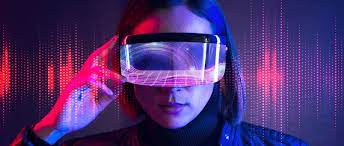While the technology continues to evolve, there are some key tools and platforms that will continue to be the most useful for web-based AR creation. XR.+ is a cloud-based, no-code Web AR studio that offers diverse options for 3D content creation. The platform includes basic tracking features as well as additional modules such as hand tracking for natural user interfaces. Blippar is another great tool that specializes in computer vision and augmented reality solutions. The software includes tools for surface tracking, image recognition, and other advanced features.
While Apple has introduced ARKit at the Worldwide Developers Conference in June 2017, there are many other open-source platforms that can help developers create AR apps. For example, Wikitude is a popular open-source AR platform that allows developers to incorporate geolocation and object recognition into their apps. In addition to Wikitude, other widely used web AR platforms include Matomo, Open Web VR, and the new Microsoft Edge.
With the availability of a wide range of browsers and cross-platform support, Web AR applications will be more accessible. Moreover, browser support will determine which platforms are compatible with your device. Google Chrome and Apple’s Safari are the most popular browsers on the market today, while Mozilla Firefox and Opera are fluctuating in their positions. In fact, Microsoft Edge has emerged as a popular choice in the past couple of years, and has already become one of the most widely-used web AR tools.
Among the best WebAR tools, Vuforia is a powerful platform that aims to provide customers with an immersive AR experience. It is a cross-platform development platform that offers a free trial. It is a powerful web AR development tool that works on iOS and Android. The tool DeepAR features a patented motion face tracking algorithm that supports unique FX solutions. EasyAR is an all-in-one destination for web-based AR development. This service offers developers an easy-to-use solution for their augmented reality projects.
Banuba is a comprehensive face AR development platform for the web. This web-based tool focuses on facial tracking and other features that will make face recognition a valuable tool in augmented reality. Aside from allowing developers to build cross-platform apps, Banuba also offers a free trial of the entire software. Its cross-platform capabilities make it the best choice for developers looking to develop Face AR on the internet.
In addition to the tools, the most promising products will include the ability to create cross-platform AR applications. This will be a big advantage for developers. The best software will allow developers to develop apps on a variety of platforms. Ultimately, web-based AR applications should be cross-platform-compatible. However, the main advantage of using these products is their price and flexibility. The technology should be available on a range of devices.
There are several companies that focus on AR/VR for product visualisation. These companies also offer an SDK and custom application development services. While some platforms are better suited for mobile devices, browsers that support web-based AR apps are essential for broader reach. For example, the browsers supported by Google Chrome and Apple’s Safari are the most widely-used in the market. In contrast, Microsoft Internet Explorer holds a fluctuating position. Its replacement, Microsoft Edge, has gained a considerable amount of popularity in the last few years.
Those developing web-based AR apps should consider cross-platform support. Not only does this enable developers to create cross-platform apps, but it also allows for more versatile app development. In addition, the platforms must support the browsers that the users use. A browser should be able to run the software and render the content on a variety of devices, including mobile phones. If the technology is supported on mobile devices, it can be used in multiple devices.
ARCore is a powerful AR development platform that lets you create interactive AR apps that work on any device. ARCore integrates 3D objects with real-world environments. It can also detect surfaces and images. This is a great way to create AR applications for mobile devices. Most of these tools are cloud-based, and you can use them with your own assets or custom code.




